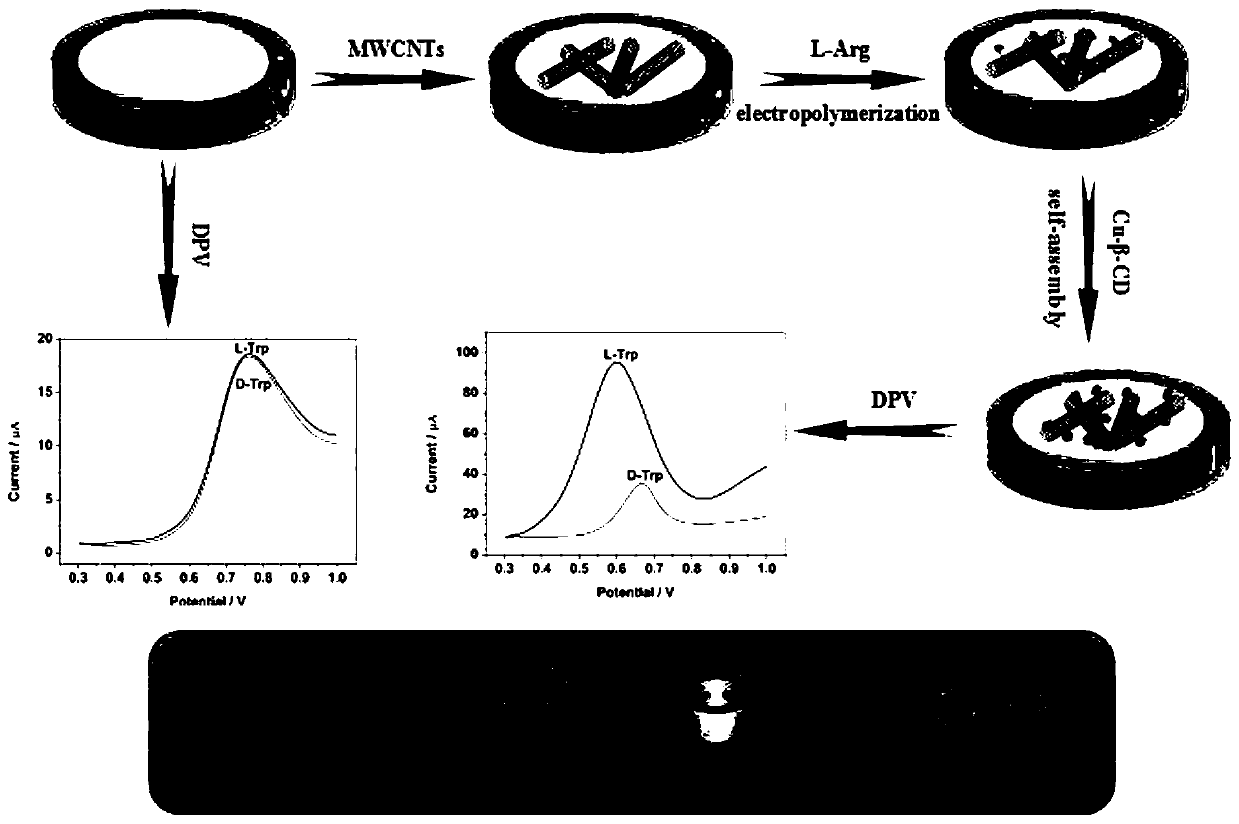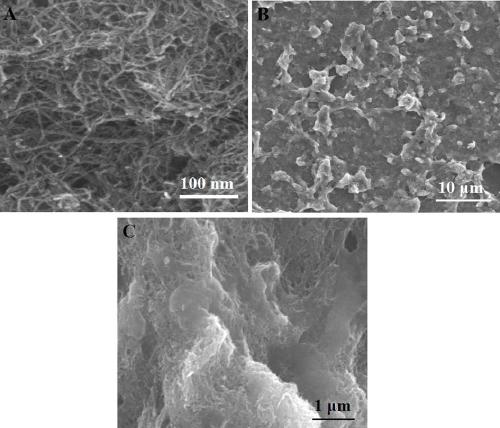Chiral sensor based on copper ion modified cyclodextrin/polyarginine/carbon nanotube and its preparation method
A technology of carbon nanotubes and polyarginine, which is applied in the field of electrochemical sensors and molecular recognition, can solve the problem of small effect and achieve the effect of simple operation, high detection sensitivity and easy availability of raw materials
- Summary
- Abstract
- Description
- Claims
- Application Information
AI Technical Summary
Problems solved by technology
Method used
Image
Examples
Embodiment 1
[0021] Embodiment 1: A kind of chiral sensor based on copper ion modified cyclodextrin / polyarginine / carbon nanotube, described sensor is that arginine L-Arg is polymerized on the surface of carbon nanotube MWCNTs by electropolymerization method , and then placed in the copper ion modified cyclodextrin Cu-β-CD solution to prepare the Cu-β-CD / PLA / MWCNTs sensor. Prepare Cu-β-CD / PLA / MWCNTs sensor, the specific steps are as follows:
[0022] (1) Prepare 5mM Cu-β-CD solution (solvent is 0.1M PBS, pH=6.5~7.5).
[0023] (2) Prepare carbon nanotube (MWCNTs) dispersion (solvent is N, N-dimethylformamide (DMF)), drop the dispersion on the surface of the electrode, dry it under infrared light, and finally rinse it off with secondary water Loosely adsorbed MWCNTs to obtain MWCNTs modified electrodes.
[0024] (3) Put the electrode prepared in step 2 in the L-Arg solution (the solvent is 0.1M PBS, pH=6.0-7.0), and electropolymerize on the surface of the electrode to obtain a PLA / MWCNTs mo...
Embodiment 2
[0026] Example 2: In order to investigate the differences in the ability of Cu-β-CD / PLA / MWCNTs sensors to recognize Trp enantiomers at different concentrations of MWCNTs.
[0027] Therefore, 0.2 mg / mL, 0.4 mg / mL, 0.6 mg / mL, 0.8 mg / mL, and 1.0 mg / mL MWCNTs were used to modify the electrodes, respectively. See the result Figure 4 , it can be seen that when the concentration of MWCNTs is 0.6 mg / mL, the difference of the oxidation peak current of L / D-tryptophan (L / D-Trp) reaches the maximum.
Embodiment 3
[0028] Example 3: In order to investigate the differences in the ability of Cu-β-CD / PLA / MWCNTs modified electrodes to recognize Trp enantiomers at different polymerization cycles.
[0029] Therefore, the electrodes were modified with L-Arg that polymerized 5, 10, 15, 20, 25 circles. See the result Figure 5 , it can be seen that when L-Arg is polymerized for 20 cycles, the difference in the oxidation peak current of L / D-tryptophan (L / D-Trp) reaches the maximum. After 20 cycles, the current difference decreased slightly, which may be due to the basic saturation of the enantioselective reaction sites of PLA / MWCNTs.
PUM
 Login to View More
Login to View More Abstract
Description
Claims
Application Information
 Login to View More
Login to View More - R&D
- Intellectual Property
- Life Sciences
- Materials
- Tech Scout
- Unparalleled Data Quality
- Higher Quality Content
- 60% Fewer Hallucinations
Browse by: Latest US Patents, China's latest patents, Technical Efficacy Thesaurus, Application Domain, Technology Topic, Popular Technical Reports.
© 2025 PatSnap. All rights reserved.Legal|Privacy policy|Modern Slavery Act Transparency Statement|Sitemap|About US| Contact US: help@patsnap.com



